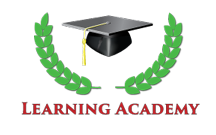
- Description
- Objectives
- Outline
- Materials
- System Requirements
- Watch a Demo
Instrumentation is one of the most important aspects of a surgical procedure. Our Surgical Instrument Technician Associate program introduces you to surgical instruments used for a variety of procedures. We also cover human anatomy in this program.
Surgical Instruments
Instrumentation is one of the most important aspects of a surgical procedure. Our Surgical Instruments course introduces you to surgical instruments used for a variety of procedures. We describe what they are for and how to use them, as well as how to properly set up and break down a surgical workspace. We look at how to assemble and inspect instruments for defects or problems. Finally, we discuss sanitization, sterilization, and infection prevention techniques in order to ensure patient health and safety.
Human Anatomy
Our Human Anatomy course provides necessary background information which is essential for students to assimilate anatomy information. Our course is useful for increasing not only an intellectual understanding of anatomy but also self-awareness of the body in action. For most people, anatomy can be somewhat intimidating, but this beginning level course will help you sort through fascinating facts about the human body in a straightforward, easy to comprehend manner.
** Course Subject to Change.
Surgical Instruments
After completing this course, you should be able to:
- Recognize instruments used for laparoscopic, robotic, and general procedures
- Describe how to use instruments for reconstructive, orthopedic, neurosurgical, and cardiovascular procedures
- Examine instruments used for oral and ophthalmic procedures
- Recall how to set up and break down a surgical workspace
- Identify proper techniques for sanitization and sterilization
Human Anatomy
After completing this course, you should be able to:
- Define the basic anatomical terminology of the human body
- Recall the spine and trunk regions of the human body and their functions
- Recognize the thorax and the abdominal sections of the human body
- Identify the functions of the pelvis and lower limbs region of the body
Surgical Instruments
Surgical Instruments Module 1
Basic Instruments
- Care and Handling of Instruments
- Parts of an Instrument
- Instrument Categorization
- Instrument Sets
- Accessory Instruments
- Point of Use Decontamination
- Sterile Processing
Surgical Instruments Module 2
Basic and General Instruments
- Accessory Instruments
- Electrosurgical Pencil
- Forceps
- Scissors
- Intestinal Clamp
- Retractors
Surgical Instruments Module 3
Laparoscopic and Robotic Instruments
- Laparoscopic Cart
- Versa Step Trocars
- Lens Warmer
- Ligasure
- Endo Catch
- EndoWrist Tips
- Curved Scissors
- Cobra Grasper
Surgical Instruments Module 4
Obstetrics and Genitourinary Instruments
- Leep Loop Electrode
- Cord Clamp
- Uterine Biopsy Curette
- Irrigation Tubing
- Telescope Bridge
- Working Element
- Ball Loop Electrode
Surgical Instruments Module 5
Ophthalmic and Otorhinolaryngology Instruments
- Tonometer
- Fox Eye Shield
- Castroviejo Caliper
- Irrigating Needle
- House Strut Caliper
- Billeau Ear Loop
- House Joint Knife
Surgical Instruments Module 6
Oral and Reconstructive Instruments
- Mouth Mirror
- Potts Elevator
- Crane Elevator
- Root Tip Pick
- Kelly Scissors
- McKissock Keyhole
- Dermatome
- Watson Skin Graft Knife
Surgical Instruments Module 7
Orthopedic, Neurosurgical, and Cardiovascular Instruments
- Depth Guage
- Mallet
- Townley Caliper
- Bone Cement System
- Raney Clip Applier
- Scalp Clip Gun
- Cushing Bipolar Forceps
- Endopath Thoracic Trocar
Surgical Instruments Module 8
Operating Room Supplies and Surgical Setups
- Scrubs
- Shoe Covers
- Surgical Masks
- Eye Protection
- Surgical Setups
Surgical Instruments Module 9
Instrument Sterilization
- Environmental Responsibility
- Operating Room Set Up and Break Down
- Assembly, Inspection, and Protection
- Instrument Staining
- Infection Prevention
- Transitioning from High-Level Disinfection to Sterilization for Semi-Critical Devices
- Safe Reprocessing of Robotic Instruments
- Off-Site Transportation
- HIPAA for Surgical Technicians
**Outlines are subject to change, as courses and materials are updated.**
Human Anatomy
Human Anatomy Module 1
Terminology and the Head and Neck Region
Module one begins with an introduction of the study of movement and muscles. Beginning with basic anatomical terminology, module one reveals the meaning in a standard anatomical position. Also included in this module is the study of musculoskeletal anatomy, the main focus is on muscles and the bones to which they attach. Finally, included in module one, is a study of the head and neck regions of the human body.
- Anatomical Terminology
- Bones, Muscles, and Joints
- The Skull
- Base of the Skull and Its Attachments
- Muscles of the Face and Jaw
- Suspensory Muscles of the Larnyx
- The Tongue
- Muscles of the Palate
- Muscles of the Throat
- The Larynx
Human Anatomy Module 2
The Spine and Trunk Region
Module two covers the spine and truck regions of the human body, beginning with the anterior muscles of the cervical spine. Moving on, we will take a close examination of the vertebrae of the spine, which forms the central support structure for the body. After learning more about the spine, the study moves on with the supporting ligaments of the spine, and the muscles groups of the back and the layers connecting the pieces together.
- Anterior Muscles of the Cervical Spine
- The Vertebrae of the Spine
- The Spine and Its Supporting Ligaments
- Muscles of the Back: Deep Layers
- Muscles of the Back: Middle and Superficial Layers
- Muscles Attaching to the Front of the Spine
Human Anatomy Module 3
The Thorax, Abdomen, Shoulder Girdle and Upper Limb
Module three examines the thorax and the abdomen sections of the human body. Beginning with the thorax and muscles of respiration, the module will continue on to learn more about the muscles of the abdomen and compare them to the muscles of the back. The rib cage as a whole is supported by various muscles. Module three will carefully examine each of these suspensory muscle groups. Also included in module three is the anatomy of the shoulder girdle and upper limbs. We will study the muscles of the arm and shoulder, forearm, hand, and wrist.
- The Thorax and Muscles of Respiration
- The Abdominal Muscles
- Suspensory Muscles of the thorax
- The Spiral Musculature of the Trunk
- The Shoulder Girdle
- Muscles of the Arm and Shoulder
- Muscles of the Forearm
- Muscles of the Hand and Wrist
- Intrinsic Muscles of the Hand
Human Anatomy Module 4
The Pelvis and Lower Limb
Module four takes a look at the pelvis and lower limb. Beginning with the pelvic girdle, the study will move on to the muscles of the pelvis and hip. The pelvis plays a crucial role in posture and movement and it is important to learn about the support structure for the legs. The muscles of the upper leg and their groups and purpose will be examined in module four, as well as, the knee, lower leg, and ankle. Finally examined in module four is the muscles of the foot.
- The Pelvic Girdle
- Muscles of the Pelvis and Hip
- Muscles of the Thigh
- The Knee, Lower Leg, and Ankle
- Muscles of the Ankle and Foot
- Intrinsic Muscles of the Foot
Ed4Career is committed to being both environmentally conscious and making it easier for you to study! We’re making your education mobile! All of our textbooks are now provided as eTextbooks*. You can access them on your laptop, tablet, or mobile device and can study anytime, anywhere.
The move away from physical books to eTextbooks means you get the latest, most up-to-date version available. This also makes your training more accessible, so you can study anywhere you have your phone or tablet. The best part is that all materials are included in your training cost so there are NO extra fees for books!**
*A few courses still have physical materials.
Internet Connection
- Broadband or High-Speed - DSL, Cable, and Wireless Connections
*Dial-Up internet connections will result in a diminished online experience. Classroom pages may load slowly and viewing large audio and video files may not be possible.
Hardware Requirements
- Processor - 2GHz Processor or Higher
- Memory - 1 GB RAM Minimum Recommended
PC Software Requirements
- Operating Systems - Windows 7 or higher
- Microsoft Office 2013 or higher. Also, you could use a general Word Processing application to save and open Microsoft Office formats (.doc, .docx, .xls, .xlsx, .ppt, .pptx)
- Internet Browsers - Google Chrome is highly recommended
- Cookies MUST be enabled
- Pop-ups MUST be allowed (Pop-up Blocker disabled)
- The Kindle Reader App or VitalSource Bookshelf App are needed for many of our courses (No special equipment needed. This can be downloaded for FREE onto your computer.)
- PowerPoint Viewer (if you do not have PowerPoint)
- Adobe PDF Reader
- QuickTime, Windows Media Player &/or Real Player
MAC Software Requirements
- Operating Systems - Mac OS x 10 or higher with Windows
- Mac office programs or a Word Processing application to save and open Microsoft Office formats (.doc, .docx, .xls, .xlsx, .ppt, .pptx)
- Internet Browsers- Google Chrome is highly recommended
- Cookies MUST be enabled
- Pop-ups MUST be allowed (Pop-up Blocker disabled)
- The Kindle Reader App or VitalSource Bookshelf App are needed for many of our courses (No special equipment needed. This can be downloaded for FREE onto your computer.)
- PowerPoint Viewer (if you do not have PowerPoint)
- Adobe PDF Reader
- Apple QuickTime Media Player


